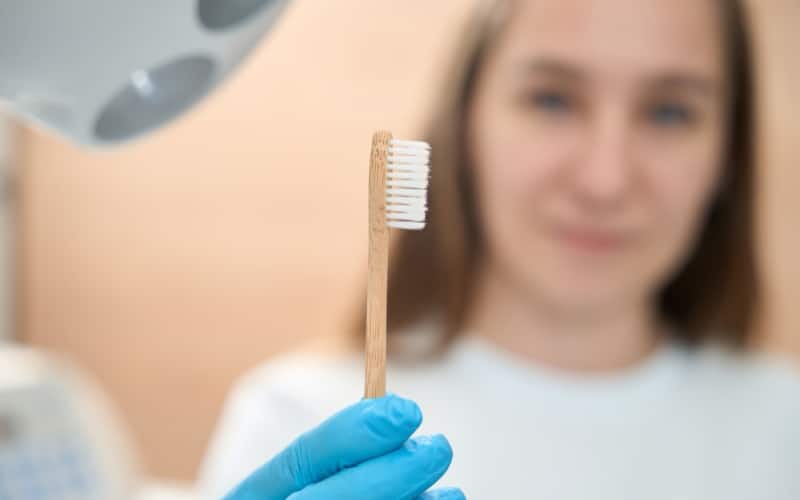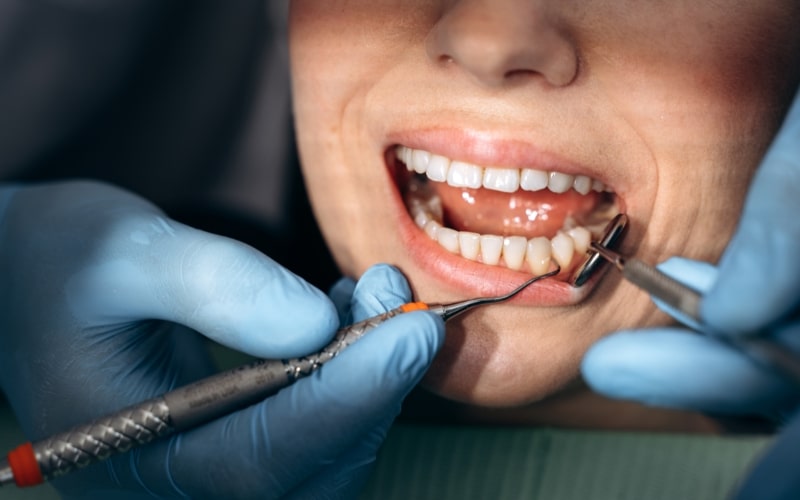New Patients Welcome!

A dazzling smile goes beyond just having white teeth; it also hinges on healthy gums that provide vital support and maintain optimal oral health. However, gum recession, where the gum tissue gradually pulls away from the teeth, can expose tooth roots and compromise both oral aesthetics and health. Understanding gum recession causes, treatment options, and prevention is essential for maintaining a beautiful and healthy smile.
Understanding Gum Recession
Gum recession occurs when the gum tissue recedes, exposing the tooth roots beneath. This condition not only affects the appearance of your smile but also increases your susceptibility to dental issues such as cavities and tooth sensitivity. Gum recession can range from mild to severe and may impact one or multiple teeth.
Who is affected by the gum recession?
Although gum recession can affect people of all ages, it is most prevalent among individuals over 65. Certain factors increase the risk of developing gum recession, including:
- Periodontal disease
- Previous orthodontic treatments, like braces
- Use of chewing tobacco
- Lip or tongue piercings
- Aggressive tooth-brushing habits
How common is gum recession?
Gum recession is a widespread dental concern, with approximately 88% of individuals over 65 experiencing some degree of gum recession on one or more teeth.
Gum Recession Causes and Symptoms
What causes the recession of the gums?
Several factors contribute to gum recession, including:
- Overly aggressive brushing
- Buildup of dental plaque or tartar
- Periodontal disease (gum disease)
- Trauma or injury to the gums
- Misaligned teeth
- Smoking or the use of chewing tobacco
- Oral piercings
Genetic predisposition to thin gum tissue can also play a role in the development of gum recession.
What are the symptoms of gum recession?
The primary symptom of gum recession is the visible exposure of tooth roots. Other signs include:
- Sensitivity to hot, cold, or sweet foods and beverages
- Discomfort or pain along the gum line
- Increased sensitivity while brushing, flossing, or during dental cleanings
Left untreated, gum recession can lead to more severe oral health issues such as bone loss and tooth mobility, potentially resulting in tooth loss.
Diagnosis and Tests
Gum recession can typically be diagnosed during a routine dental examination. Dentists use a periodontal probe to measure the extent of gum recession and assess the depth of periodontal pockets around the teeth, which can indicate the presence of gum disease and potential bone loss.
Management and Treatment
Can gum grow back?
Unfortunately, once gum tissue has receded, it cannot grow back naturally. However, preventive measures and appropriate treatment can help prevent further recessions.
How can I reduce the sensitivity caused by gum recession?
To alleviate the discomfort associated with gum recession, dentists may apply fluoride varnish or other desensitizing agents. Desensitizing toothpaste containing ingredients like potassium nitrate or stannous fluoride can also help reduce sensitivity over time.
Treatment Options for Gum Recession
Nonsurgical Treatments
Mild cases of gum recession may be managed with nonsurgical approaches, such as:
- Topical antibiotics to address gum disease
- Dental bonding to cover exposed tooth roots
- Orthodontic treatment to correct tooth positioning
Gum Recession Surgery
For more severe cases, gum graft surgery is often recommended. During this procedure, a periodontist (gum specialist) uses gum tissue from the patient’s palate or a donor source to cover the exposed roots and restore gum tissue.
Recovery from Gum Grafting Surgery
Recovery time varies based on the extent of treatment but typically ranges around two weeks. Following postoperative instructions diligently is crucial for a successful recovery.
Prevention
While genetic predisposition to thin gum tissue cannot be prevented, adopting good oral hygiene practices can significantly reduce the risk of gum recession.
- Brushing teeth thoroughly twice daily with a soft-bristled toothbrush
- Flossing daily to remove plaque and debris between teeth
- Using antimicrobial mouthwash regularly
- Attending regular dental cleanings as recommended by your dentist
- Avoiding smoking or using chewing tobacco
Gum recession is a frequent dental concern that can impact both oral health and appearance. Understanding gum recession causes, treatment options, and prevention is crucial for preventing complications and preserving a healthy smile. If you observe signs of gum recession or have any concerns regarding your gum health, reach out to our dental office today to arrange a consultation. Dr. Eskandar, your trusted dentist in Ventura, is committed to offering personalized care and treatment options for achieving optimal gum health.




